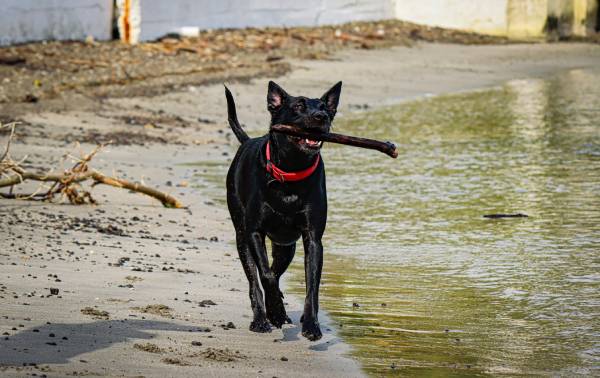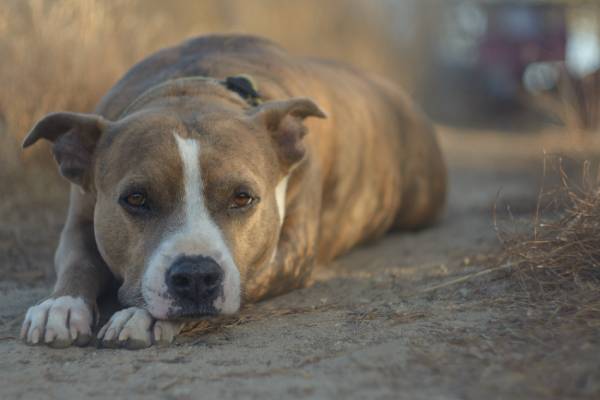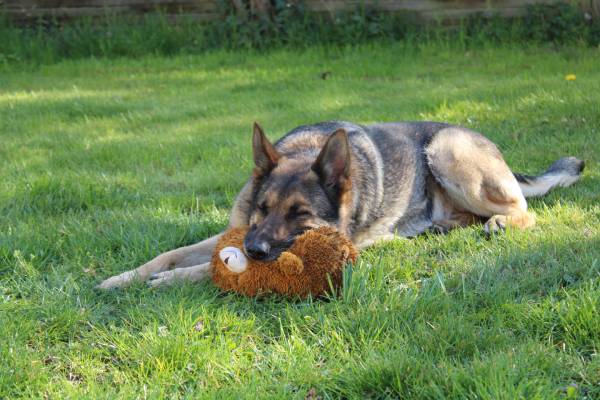Approximately 10% of all dogs, and 75% of senior dogs, have some form of heart disease. Heart disease can affect just one side of the heart (left or right), or sometimes it can affect both sides. It is slow to develop and can result from a genetic defect or have been caused by old age, injury, infection, poor diet or a lack of exercise.
When a dog's heart is unable to pump an adequate amount of blood around the body, this is a condition known as congestive heart failure (CHF). Congestive heart failure itself is not a disease: it is a condition that is the result of heart disease. Congestive heart failure is a fairly common condition in dogs. CHF causes an increase in both pressure and fluid in and around the heart that eventually leaks out into the lungs and sometimes elsewhere in a dog’s body. This build-up of fluid restricts a dog’s lungs and prevents them from expanding normally, thereby reducing the exchange of oxygen into the bloodstream.
What is the Difference Between Right-Sided and Left-Sided CHF?
Left-Sided Congestive Heart Failure
This is the most common type of congestive heart failure seen in dogs. The left side of the heart collects oxygen-rich blood and pumps it around the body to various organs. Certain symptoms such as coughing, difficulty breathing, and exercise intolerance may indicate a build-up of pressure in the vessels that deliver blood to the left atrium (upper chamber) and ventricle (lower chamber). As a result, fluid begins to accumulate within the lungs (a condition known as pulmonary oedema).
Pulmonary oedema, which is the build-up of fluid in a dog's lungs or pleural effusion, which is a build-up around the lungs hinders the normal expansion of the lungs and restricts oxygen from moving into the blood stream. This results in the dog taking deep and rapid breaths in an attempt to get enough oxygen. A dog with fluid in their lungs has trouble exercising, might have a persistent cough, and will appear weak and sluggish. Often a dog with heart failure will not have a good appetite, in addition to other symptoms. On occasion, dogs with left-sided CHF can faint due to a lack of blood flow and oxygen to the brain.
Right-Sided Congestive Heart Failure
If the right side of the heart is weak or there is a dysfunctional valve, the heart is unable to pump enough blood to the lungs where the blood is reoxygenated. Pressure builds up in the vessels that deliver blood to the right atrium, and the body’s veins and capillaries. This can cause fluid build-up in the abdomen, a condition called ascites. Fluid may also leak from veins in the limbs and cause swelling, a condition known as peripheral oedema.
Biventricular Failure
This arises when both the right and left ventricles are not working properly. Biventricular failure can occur in dogs with a heart muscle failure that is the result of dilated cardiomyopathy (DCM) or poisoning. Symptoms of biventricular failure can include the same symptoms as both left and right-sided congestive heart failure, but commonly only the symptoms of one appear.
Best Treatment for Heart Failure in Dogs
The best treatment for your dog’s congestive heart failure depends on the cause of the underlying heart disease and how severe your dog’s case of heart failure is. Your vet will recommend the best regime for your dog based on their symptoms and causes of congestive heart failure. Generally, the goal of the treatment for heart failure will be to reduce the build-up of fluid around your dog's lungs and to increase the amount of blood being pumped by the heart to the lungs and the rest of the body. The treatment aims to improve both the quality and length of your dog's life. Your vet has a choice of a variety of medications, as well as supplements and nutritional changes to help you reach these goals.
ACE Inhibitors
One of the most common types of medication used is called an angiotensin-converting enzyme inhibitor, or ACE inhibitor. Examples of these are enalapril (Enacard®), lisinopril and benazepril. ACE inhibitors have been shown to improve both clinical signs and survival in dogs with congestive heart failure.
Diuretics
Diuretics are another group of drugs that cause excess fluid in the body to be taken up by the kidneys and excreted as urine. These are very effective in treating congestive heart failure, since they remove the excess fluid that has built up. There are many different types of diuretics including loop diuretics such as frusemide (Lasix®), thiazide diuretics such as hydrochlorothiazide (Microzide®), and potassium-sparing diuretics such as spironolactone (Aldactone®). Your veterinarian will choose the most appropriate diuretic based on each individual animal.
Vasodilators
Another group of drugs, called vasodilators, relax (or dilate) blood vessels in the body and decrease the amount of pressure on the heart and allow it to pump blood forward with greater ease. Examples of these drugs are nitro-glycerine (Nitrostat®), hydralazine (Apresoline®), and sodium nitroprusside (Nipride®). ACE inhibitors like enalapril also have vasodilator effects.
Positive Inotropes
Another group of drugs called positive inotropes may also be administered in certain cases to increase the force with which the heart muscle beats (increased vigour of contraction), allowing it to pump more blood forward to the lungs and the rest of the body. Pimobendan (Vetmedin®) is the most commonly used positive inotrope. Others include digoxin, milrinone, and dobutamine.
In addition to medications, there are other therapies to help improve and or help prevent cases of congestive heart failure. Modifying your dog's diet and limiting the amount of salt they eat is a critical component of treating congestive heart failure. For many pets with congestive heart failure, exercise restriction is a crucial aspect of therapy in order to reduce the risk of worsening their condition or even death.










